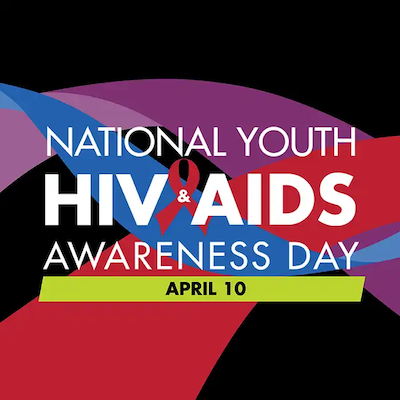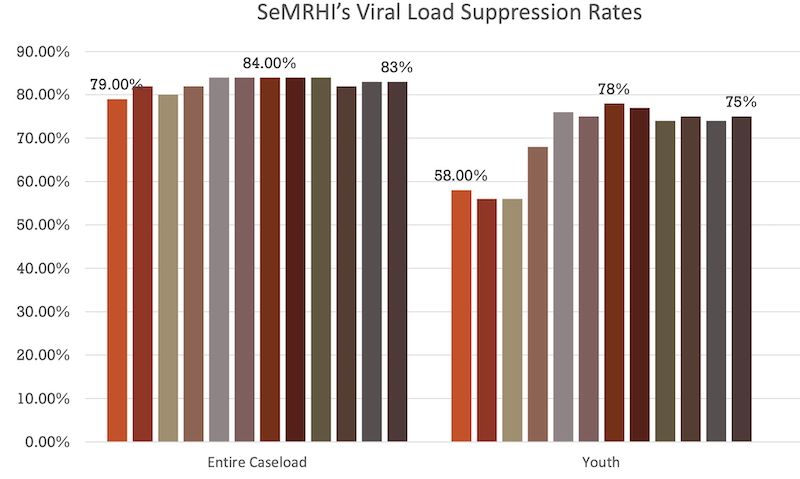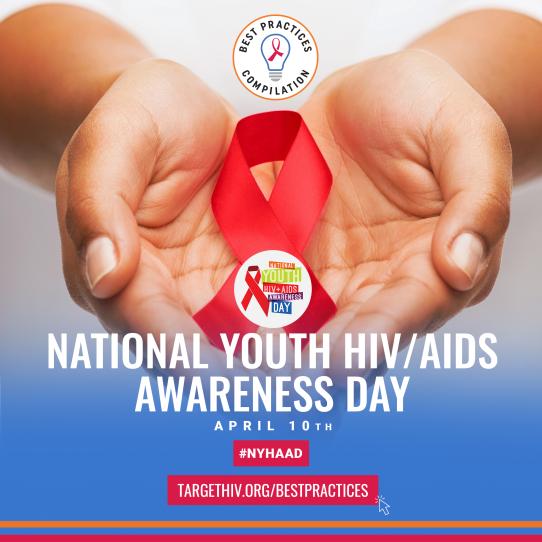
Statistics
In 2022, 3.3% of Ryan White HIV/AIDS Program (RWHAP) clients were 13-24 years of age. The proportion of RWHAP clients in this age group who achieved viral suppression has increased steadily and significantly, from 46.6% to 83.8% (2010 - 2022). The rate improvement tracks (but slightly lags) that for the overall RWHAP population: 69.5% to 89.6% from 2010-2022 (2022 RWHAP Annual Client-Level Data Report, HRSA 2023).
Among other categories of RWHAP clients in the age range 13-24, viral suppression was lowest among transgender youth (81.0%), transgender youth with HIV attributed at diagnosis to sexual contact (79.7%), and youth with unstable housing (75.3%).
Youth and HIV Care Interventions

HRSA has funded multiple projects that focus on engaging and retaining youth with HIV in care. As of April 2024, the Best Practices Compilation presents 17 interventions--many that were developed by HRSA initiatives--with demonstrated effectiveness at improving client HIV outcomes. Examples include:
- OPT-In For Life, a social media-based intervention targeting young adults with HIV ages 18 to 34, documented a steady increase in viral suppression over 6-, 12-, and 18-month post-intervention periods (86%, 84%, and 91%), a dramatic increase from 64% at baseline. This project is one of multiple SPNS Social Media Initiative projects found in the Best Practices Compilation.
- The Village Project is intensive case management focused on young black gay and bisexual men. Viral suppression increased from 45% at baseline to 76.8% at 12 months post enrollment. This project was developed under the SPNS Initiative, Evidence-Informed Behavioral Health Models to Improve HIV Health Outcomes for Black Men who have Sex with Men.
- Project ACCEPT was an NIH-funded educational and skill-building intervention focused on improving medication use and adherence among youth with HIV. Self-reported medication adherence was 2.33 times greater among participants as compared to the control group. In addition, viral load improvements at 12 months were also higher among participants. This project was reviewed under HRSA's Center for Innovation and Engagement (CIE) program, which identified replicable evidence-informed interventions.
- Tailored Motivational Interviewing: E2i involves brief counseling sessions, adapted for the RWHAP. The intervention was implemented at three sites. Documented improvements included: engagement in care (65% to 95%); retention in care (36% to 75%); ART prescription (81% to 100%); and viral suppression (42% to 71%). This project was developed under the SPNS E2i initiative.
More Youth-Focused HIV Intervention Tools
- HRSA HAB Building Futures: Supporting Youth Living with HIV presents best practices for enhancing services to youth with HIV, ages 13-24, that contribute to better outcomes in retention and viral suppression.
- HIV Disparity Interventions and didactic presentations are two collections of quality management approaches to improving HIV outcomes among various populations, including youth. These tools were developed by the HRSA Center for Quality Improvement and Innovation (CQII).
- The National HIV Curriculum presents a section on delivering HIV care to adolescents and young adults, and the National HIV PrEP Curriculum (released in 2023) contains a section on HIV PrEP for Adolescents and Young Adults. See additional clinical resources on the AETC National Coordinating Resource Center's Adolescents and Young Adults.
Use our search engine and see our Adolescents & Youth topic page for more.
Ryan White Conference Presentations: Youth
Access our Conference Presentations database for videos, slides and posters from recent Ryan White Conferences. Sessions feature interventions focused on sexual health, mental health, housing, and the role of peers in engaging youth in HIV care.
Visit the Posters
Try not to miss the poster exhibits at the next Ryan White Conference. You may find gems, like Achieving Viral Load Suppression in Youth Living With HIV in South Mississippi, a poster presented at the 2020 National Ryan White Conference on HIV Care & Treatment, which has since been incorporated within the Best Practices Compilation as Reaching Viral Suppression in Youth with HIV.

Achieving Viral Load Suppression in Youth Living With HIV in South Mississippi. Poster: 2020 National Ryan White Conference on HIV Care & Treatment.

